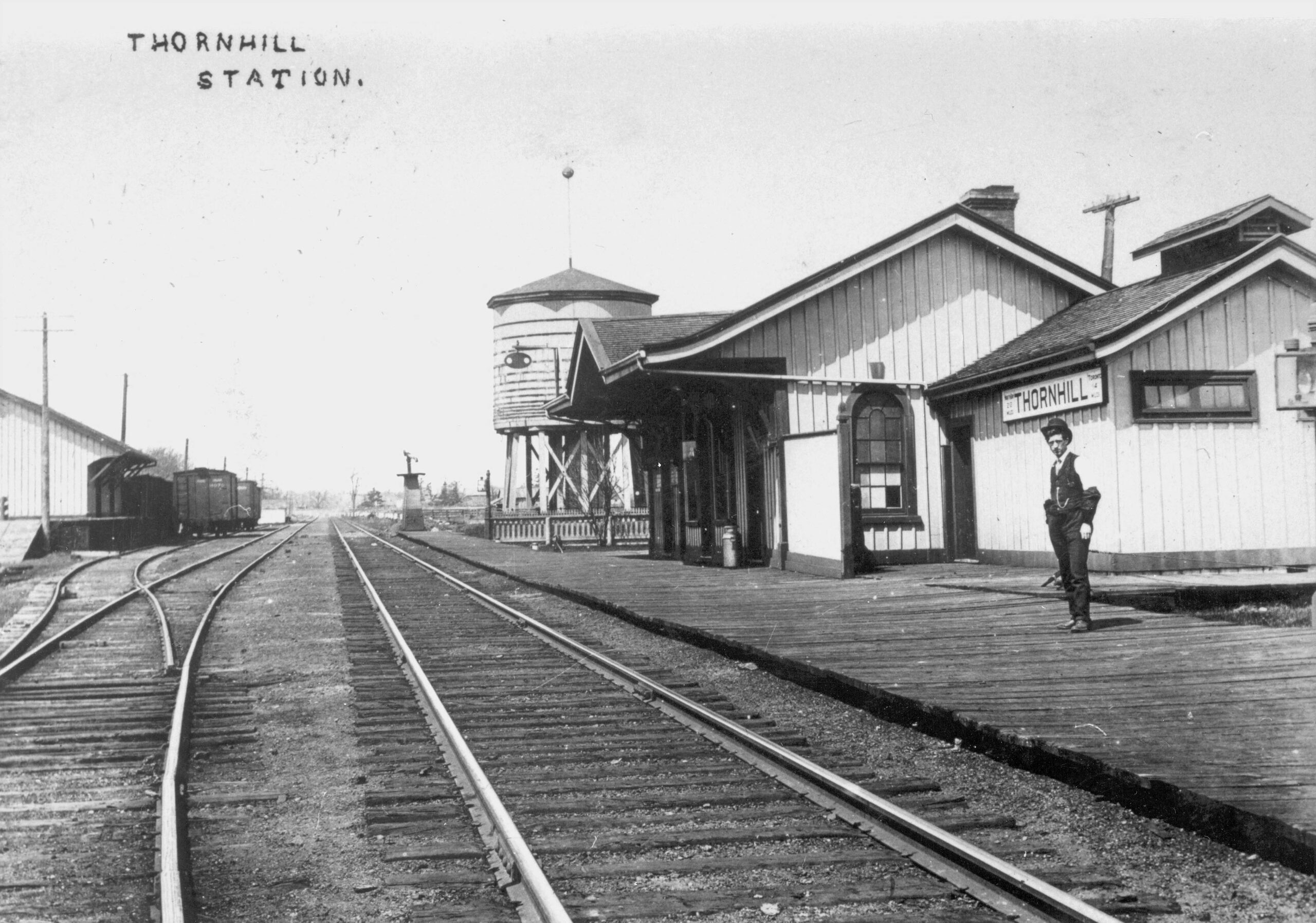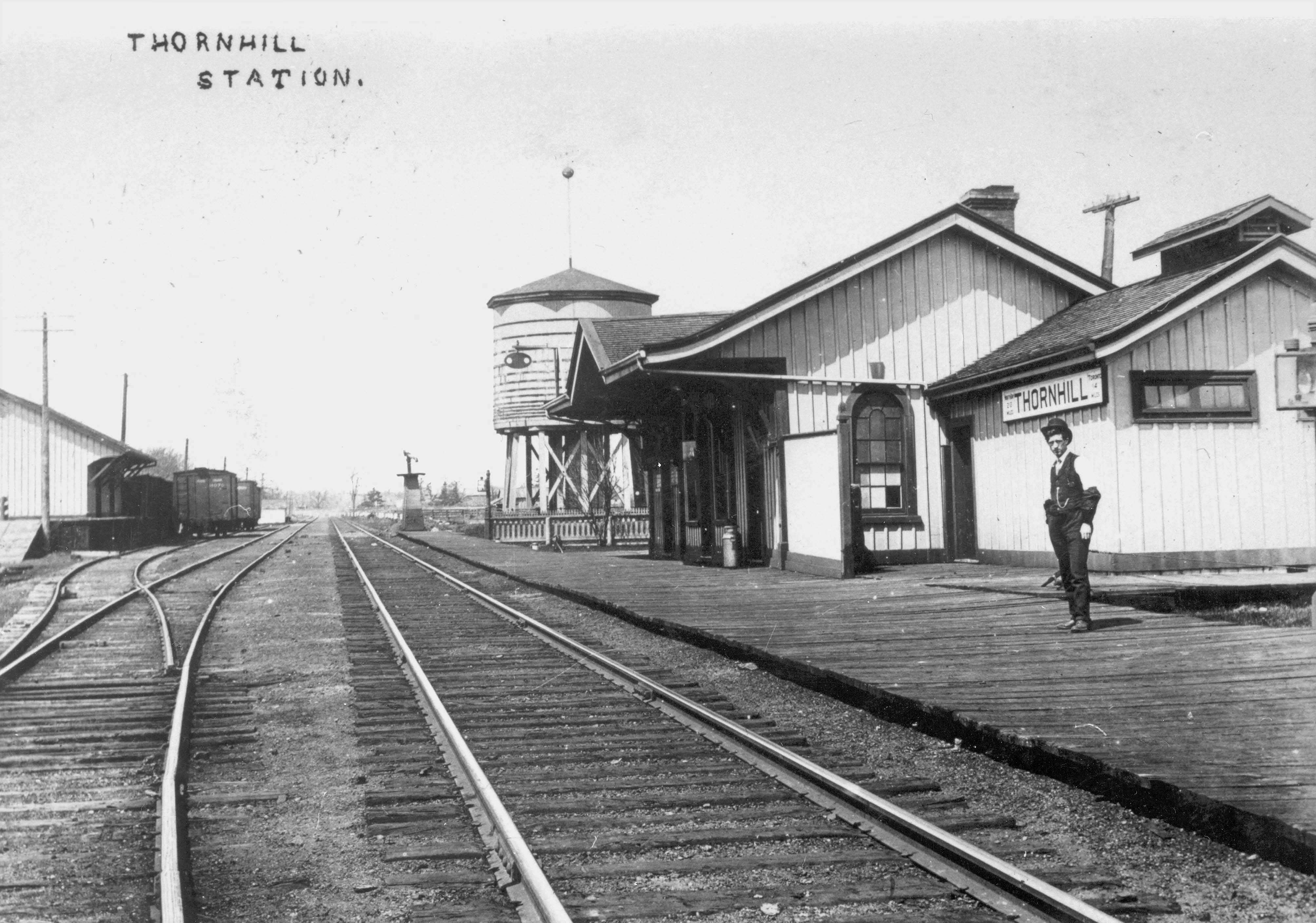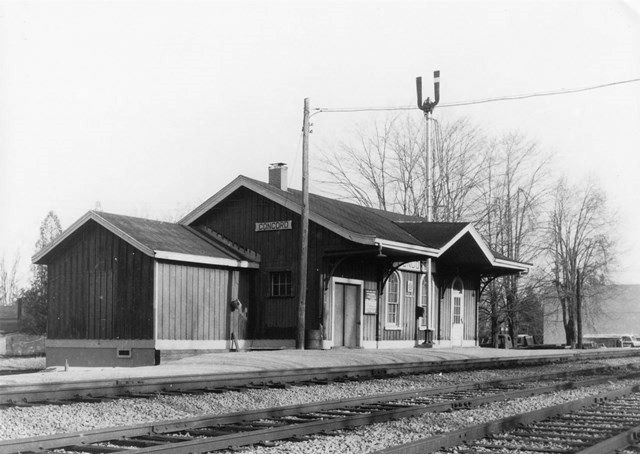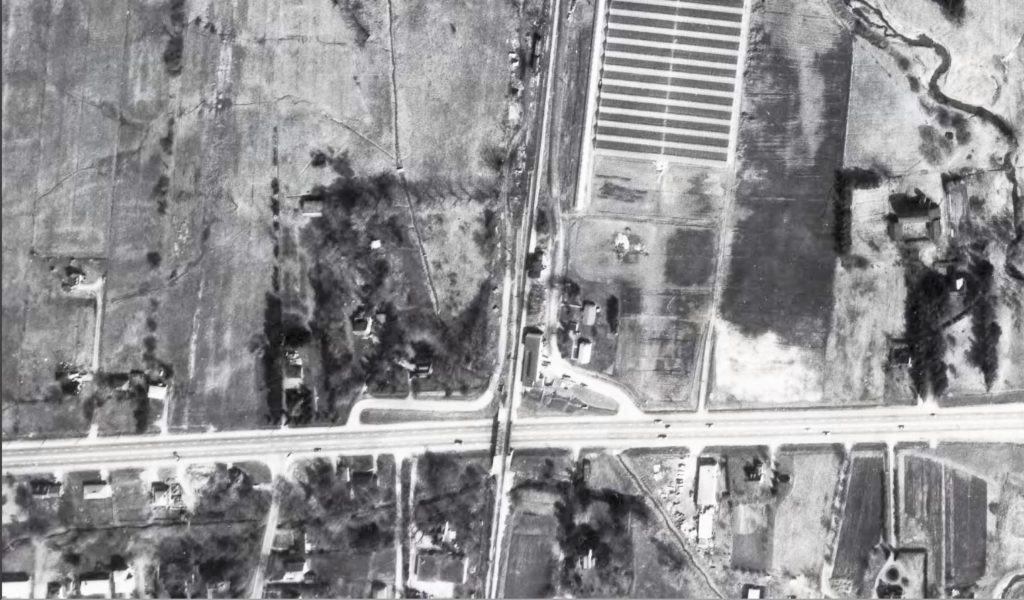Summary
Thornhill Station was built by the Ontario, Simcoe & Huron Railway while construction was progressing northward from Toronto. It followed a standard design which the OS&H had built in numerous places on its original mainline to Collingwood – a wood frame building with board-and-batten exterior walls and a simple pitched roof. It was located closest to the rural Concord post office, though it was named for the small community of Thornhill roughly five kilometres to the east. The first train to Aurora arrived at Thornhill on May 16th, 1853, marking the beginning of revenue passenger service on the OS&H. Service was gradually extended northward over subsequent years, particularly after the OS&H was reorganized as the Northern Railway of Canada in 1858. By 1876, a total of five trains stopped at Thornhill Station on a daily basis.
Thornhill Station changed hands multiple times during the 19th and 20th century. The Northern Railway merged with its rival the Hamilton & Northwestern Railway in 1879, operating under the name Northern and North Western Railway from that point on. It was acquired by the much larger Grand Trunk Railway in 1888. While the Grand Trunk would modify numerous stations on the former Northern Railway line, Thornhill Station would be an exception and remain virtually unchanged from its 1853 design. The station’s name was changed to Concord in 1909 as the local population increased, and by 1913 service had increased to fourteen trains per day. The Grand Trunk Railway encountered financial difficulties during the early 20th century, culminating in its nationalization and subsequent absorption into Canadian National in 1923.
When Highway 7 was extended from Brampton to Peterborough in 1927, the east-west road that Concord Station was situated on was incorporated into it. While this may have improved access to the station from Thornhill or other surrounding communities for a short time, the widespread adoption of automobiles and construction of more provincial highways in the postwar era would contribute to a significant drop in passenger ridership. The completion of Highway 400 between 1947 and 1952 would exacerbate this effect for Concord Station in particular, as it would run parallel to the railway for much of its length. Where service to Concord Station was sitting at eight passenger trains per day in 1945, it would be reduced to only one by 1961. The station would be closed to passengers in October of 1964, but the building remained in use by the railway for other purposes for several more years. It was finally torn down over a decade later in 1978 and the lot remains empty.
Condensed Station Info:
| Location: | Served By: | Current State: | Date Built: | Date Demolished: |
| Highway 7 east of Bowes Road | NRC (1853 – 1879) N&NW (1879 – 1888) GTR (1888 – 1923) CNR (1923 – 1978) | Demolished | 1853 | 1978 |





